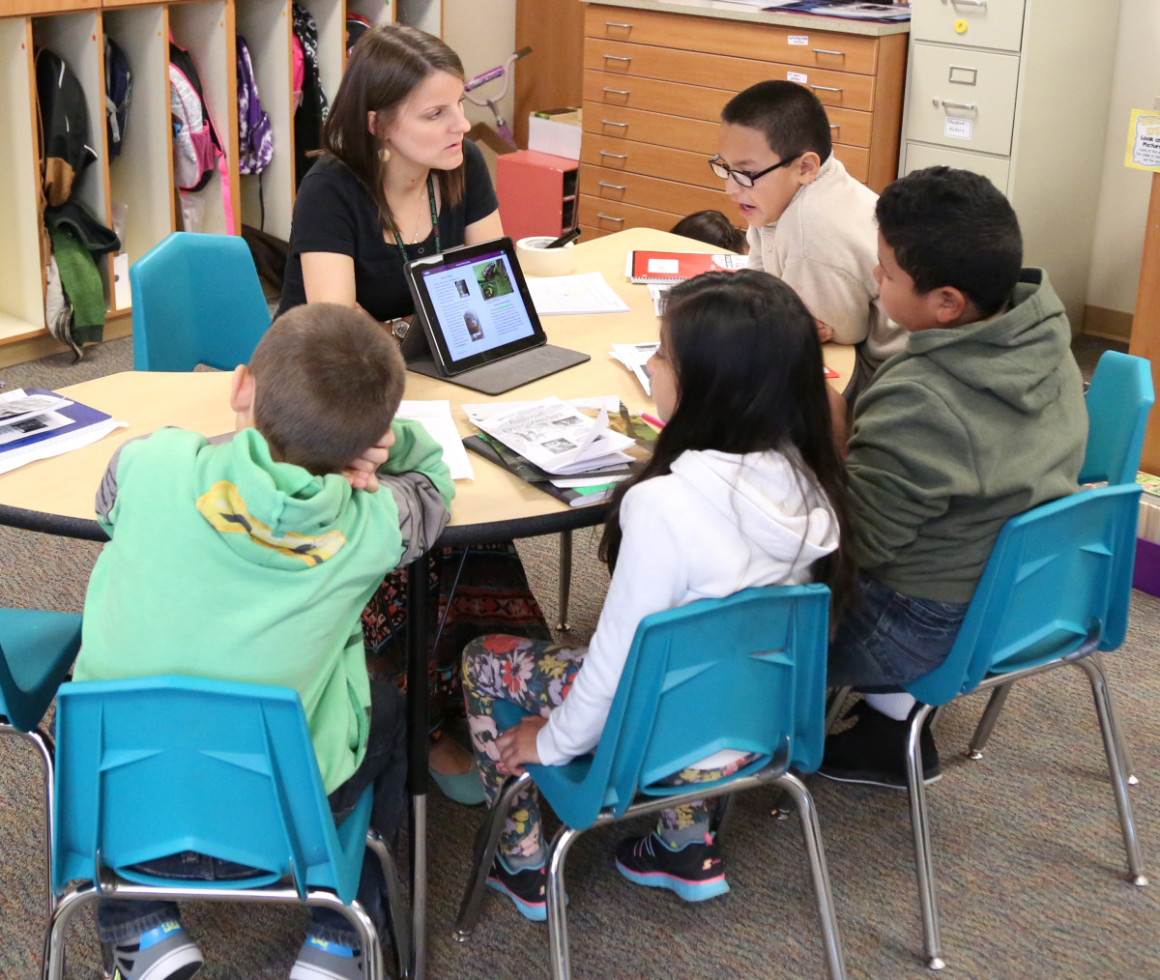Jeff Dillon was determined to get technology into Wilder’s two schools.
First, Wilder’s district superintendent applied for state pilot project grants, to no avail. Then he began talking to officials with Apple — and said he was determined to equip his schools and his students, with or without help from the high-tech giant. “We were going to get this done,” he said.
Dillon, his staff and students are in waiting mode, for now.
When classes resumed on Aug. 19, Wilder’s 450 students returned to schools that hadn’t changed much from the previous year. But by November, every student in every grade could have an iPad in hand.

When that happens, Dillon hopes the devices will start breaking down some boundaries. He expects to see students using their tablets in school, at home and on field trips. In the end, he wants Wilder’s graduates to be better prepared to compete in the world beyond their rural community.
Demographic challenges
Tucked away amidst Canyon County’s vineyards and vegetable farms, an hour’s drive west of Boise, the Wilder School District is among the poorest in the state. In 2014-15, nearly 94 percent of Wilder’s students qualified for free or reduced-price lunch. Dillon measures the poverty another way: Based on district surveys, 50 to 60 percent of students do not have the Internet at home.
Poverty breeds transience. Dillon pegs the student turnover at 25 to 30 percent a year. The churn is not really the result of migrant farm work, he says; more often, parents uproot their families entirely, as they move to another town for a job. Wilder’s teachers face a constant battle, Dillon said. When students leave the district after a couple of years, they are usually ahead of grade level — but in almost all cases, new students are coming in behind grade level.
Meanwhile, schools’ demographic gaps have garnered increased national attention. President Obama launched a federal ConnectED initiative in June 2013; the goal is to ensure that 99 percent of students have access to broadband within five years. Apple followed with a ConnectED project of its own, furnishing iPads to every student in 114 schools in 29 states. (Wilder High School-Middle School and Wilder Elementary School are the only Idaho schools in Apple’s program).
Apple has concentrated its program on schools facing socioeconomic challenges. In the 114 target schools, 96 percent of students qualify for free or reduced-price lunch — a percentage that mirrors Wilder’s demographics. Ninety-two percent of the Apple ConnectED schools’ students are Hispanic, black, Asian, American Indian or Alaskan natives.
In a sense, a local superintendent and an international corporation share similar concerns for the long term. Dillon is concerned about whether Wilder’s graduates can compete in a high-tech workplace. Apple is worried about recruiting workers.
“A lack of equal access to technology and knowledge puts entire communities and populations of students at a disadvantage, especially minorities,” Apple says on its ConnectED website. “Minorities are significantly underrepresented in the technology industry.”
Rollout challenges
Wilder first received word of the Apple grants in October. But it’s been a slow, open-ended rollout.
“They’re very clear, they want to do it right,” Dillon said.
Dillon said it’s unlike any grant his schools have ever received, in the sense that no dollar figures are attached. This is a significant difference from the technology pilot grants the state awarded in 2013 to 2014; pilot schools received set amounts of state funding in early July, and then moved quickly to get their programs online as quickly as possible during fall semester.
In a way, Dillon said he is relieved Wilder didn’t get one of the state pilot grants, since his schools are getting more support via Apple. This, in turn, has helped the district work through startup snags.
For example, Apple picked up the unexpected cost of increasing broadband Internet capacity in the schools, an upgrade that has pushed back the launch. Meanwhile, the school district had the time to secure another contract to provide home data service. This contract will allow students to work through a district network and use their tablets for homework, whether they have home Internet or not.
The school broadband upgrades are the last big hurdle to the launch. Once the wiring work is completed, teachers will get their tablets and laptops and then the students will get their devices.
The teachers won’t be starting completely from scratch. Wilder purchased some iPads so teachers could start using them in the classroom — and get a sense of how they’ll be able to incorporate student tablets into the learning process. Even so, while many students can’t wait to get their hands on the tablets, Dillon knows some of his teachers are apprehensive. “Their eyes are wide open right now, so we will support them 100 percent.”
Dillon can see the potential for a paradigm shift in learning, and teaching. Students will be able to learn independently — wherever they are. They will be able to use the devices as a tool to download and read class materials, and as an instrument for creative class projects. While students work more independently, teachers will be able to close attention to small groups of students, who may be a year or two ahead of their grade level, or a year or two behind.
The long-range objective focuses on life after high school. The most recent numbers, from 2013, show some promise; 57 percent of Wilder’s graduates continued their education, compared to a 52 percent go-on rate that year. However, Dillon says, schools need to get students ready for the future, and that means putting technology in the hands of elementary school students.
“Our kids have to become better prepared, and we have to start now.”
